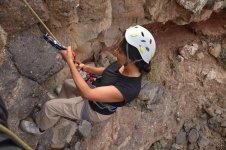nobrotson
Active member
Mark Wright said:On the point of getting knocked out during a descent due to falling rocks, I am aware of many instances of this happening including the one in JH just the other year.
I think the real issue would come when someone makes a claim against, e.g. a University club, for supplying an inappropriate device to a novice with no additional control measures, resulting in a fall. You will need to put forward a very good case to the judge to convince him/her that you did everything that was reasonably practicable to reduce the likelihood of such an accident.
An expert witness working on behalf of the prosecution will likely be very knowledgable about such things and I doubt anyone would be able to put forward a convincing argument that a Simple was the most appropriate device for a novice to be using on a single rope down a cave.
Which year was the JH incident? I remember a group of us discussing the legal aspect of equipment choice and maintenance with you at CHECC a few months back. What sort of SRT setup would you say would be the most acceptable from a legal perspective? Considering the fact that I don't think any caver I know uses an ID to cave, I'm guessing you think the stop since it conforms to a higher EN standard. But what about the FFS decision to endorse simples that others have referred to (I haven't researched this myself so I am not able to validate it)? Could they be brought in as expert witnesses to defend the simple in some way?
Or would you suggest using a back-up device such as a shunt? This doesn't seem practical, and you have just outlined the weaknesses of a shunt as well so...




